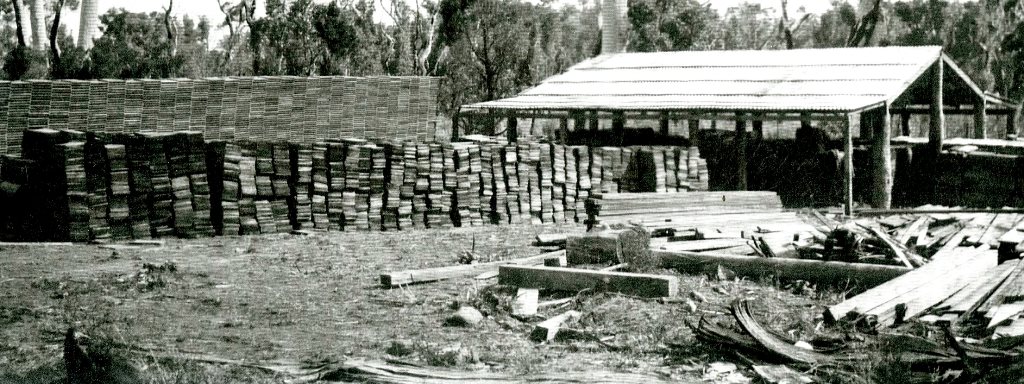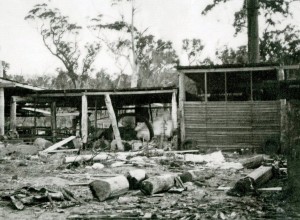In December 1954 I arrived as a new bride to the Bow Bridge district where my husband, Bruce Smith, together with his father, Jim, owned and operated a sawmill.
The mill was originally built by Jim’s twin brother Jack in 1938, who along with his wife Marie lived in an adjacent house. Employees were gleaned from local district residents.
Fruit cases known as “shooks” formed the main production of the mill, together with building timber called “scantling”. Shooks consisted of ends and sides to be purchased ready to be put together by fruit growers. Shooks are no longer used, but there would still be buildings in Walpole & Districts in which scantling still survives.
During the war years Jack Smith found it necessary to return to his farm near Williams. His twin Jim (my future father-in-law) and his wife Eila moved from an East Porongorups sawmill to manage the one at Bow Bridge.
Smith’s Mill closed in 1942 when Jim started work for Wesfarmers, delivering and servicing farm machinery. Jim and Eila then moved to Bailup where another brother, Bob Smith, needed a manager for his sawmill. Bruce (my future husband) joined his parents there when he left school.
Jim, Eila and Bruce returned to Bow Bridge in 1946 and reopened the mill that Jack built, producing shooks and scantling as before plus fencing and yard timber for the War Service Land Settlement scheme.
So-called “displaced persons” or new Australians provided the workforce, along with local men looking for work when times were lean on their farming properties. Three Latvians were the first to join. They were housed in little mill cottages on site.
The menfolk of a number of Walpole & Districts families worked at Smith’s Mill over the years. And there was the man from Denmark who rode his pushbike over the 26 miles of gravel road at the beginning of the working week, lived on site, and then cycled back to Denmark for the weekend.
Smith’s Mill closed in 1961 and the machinery was sold. The “permit” (milling area) was purchased by Millars.
This post is based on Molly Smith’s first “Looking Back with Molly” column, which appeared in the August 14, 2013 edition of the Walpole Weekly.





